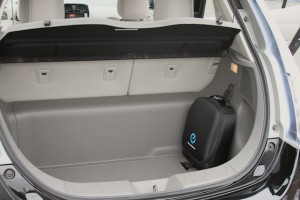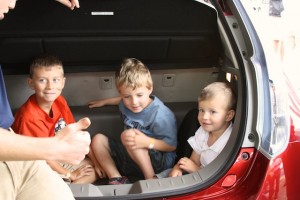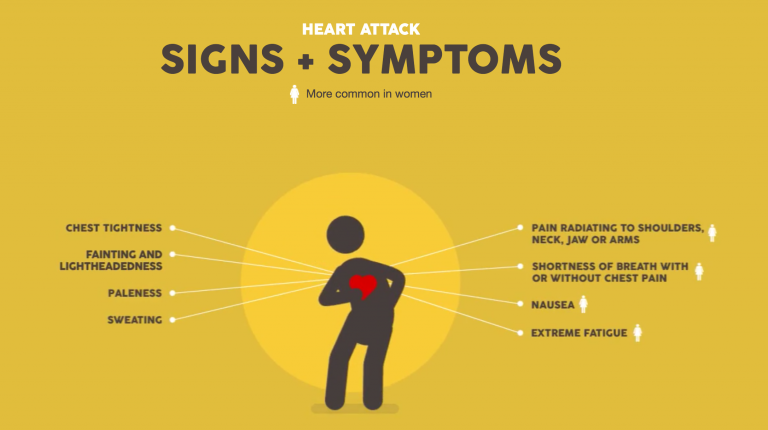Is the Nissan LEAF Family Friendly?
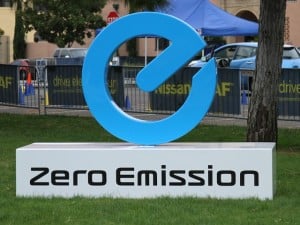 Nissan is about to start a revolution. In December, they are launching what they call “the new car”, a 100% electric, 0 emissions, 5 passenger vehicle called the Nissan LEAF. This will be one of the first alternative fuel vehicles to be mass-produced on any scale. The LEAF runs entirely on batteries and has no tailpipe thus creating no emissions. Nissan plans to put 20,000 of these vehicles on the road in 2011 with many more to follow.
Nissan is about to start a revolution. In December, they are launching what they call “the new car”, a 100% electric, 0 emissions, 5 passenger vehicle called the Nissan LEAF. This will be one of the first alternative fuel vehicles to be mass-produced on any scale. The LEAF runs entirely on batteries and has no tailpipe thus creating no emissions. Nissan plans to put 20,000 of these vehicles on the road in 2011 with many more to follow.
This past weekend, we had the opportunity to spend some time with the vehicle at Nissan’s Drive Electric Tour here in San Diego. The Drive Electric Tour is currently touring the country to let consumers test drive this revolutionary alternative fuel vehicle and see what a realistic option it is for the average driver.
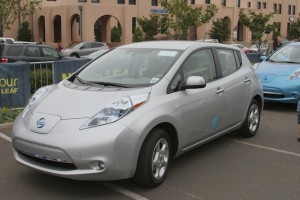
Tim Gallagher, Corporate Communications Manager, said that most people showing up for the event were very interested to see how the vehicle compares with a traditional gas vehicle. Given that LEAF actually stands for Leading, Environmentally-friendly, Affordable, Family car we thought we would explore how it works as a family car.
Nissan claims that 95% of drivers drive less than 100 miles a day, the average range of the LEAF. Although depending on how you drive it you may realistically get between 65 to 135 miles. Stop and go traffic and city driving actually help the charge the batteries due to the regenerative braking system but running the AC in Southern California sunshine will decrease it. What do you think? Is 100 miles a day enough for most busy moms?
Getting a full charge is easy enough as Nissan is anticipating that most owners will simply charge the vehicle each night at their home taking advantage of cheaper off-peak electricity during the night. They currently figure it will run $2.64 at the national average rate for electricity to get your 100 miles. Given that the average price of gas here in California is currently $3.13 per gallon, if your car gets 25mpg, you would save almost 80% off your fuel bill.
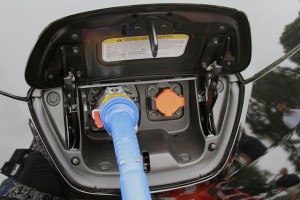
If you do need a charge before you return home, Nissan is working very hard to establish a charging infrastructure. By June 2011, Nissan plans to have 1400 public charging stations in place in the San Diego area at places such as Costco and Best Buy. They also plan to have 60 rapid charging stations in place which will decrease the standard charging time from 8 hours to just under 30 minutes. (to 80%). They are also building a charging infrastructure in the other launch markets including Los Angeles, San Francisco, Portland, Seattle, Phoenix, Tucson, and Tennessee.
Now about the car – it is a 5-passenger hatchback. The front seat has ample room for even my 6’ 3” frame. The back seat has stadium seating (meaning it sits higher than the front row) due to the battery pack under the floor. This offers great visibility for little ones but could make headroom tight for tall adults. The back seat has two sets of latch points for car seats and three tether points in the hatchback trunk.
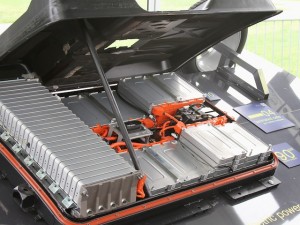
We test fit a Britax Advocate car seat along with a Britax Parkway booster seat. The two seats fit perfectly fine in the outboard positions but with these car seats it would be very challenging to fit any normal-sized person in between the seats. As Autoblog stated in their review of the vehicle, “Nissan claims you can fit three people in the rear, but as always, make sure the person in the middle is suitably malnourished and amiable.” It might however work for three narrow car seats and we are hoping to try that at a later date.
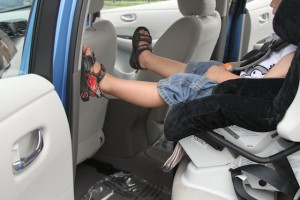
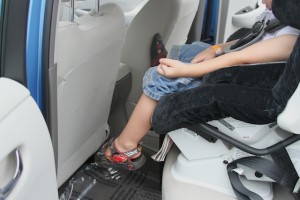
The trunk is surprisingly roomy. Nissan claims you can fit two golf bags. Our view was that all umbrella strollers and other gear should fit fine but many larger strollers would likely struggle.
There is plenty of cargo space; it is simply a matter of how wide the space is between the wheel wells. The hatch did however; look very inviting to our three small children. At the encouragement of the Nissan rep, it did make for a great photo opp.
On our test drive, the first thing we noticed was the absence of engine noise. It is so quiet that it will never disturb even the fussiest baby, but you may be out of luck if the sound of an engine lulls your baby to sleep. Acceleration was great up to about 30mph but feels more like a 4 cylinder engine after that. The ride is neither harsh nor soft which in my opinion means it will get the job done fine just don’t expect sports car results.
The Nissan LEAF has an MSRP of $32,780 but there is a $7500 federal tax credit for electric vehicles and here in California there is also a $5000 Alternative Fuels Rebate. The upper SL model also includes a back-up camera for increased visibility, which can play a huge role in preventing backovers.
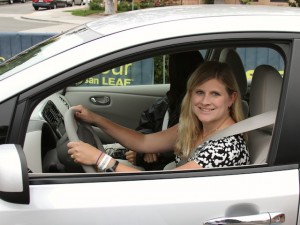
The revolution has begun and 20,000 people have already made reservations for the vehicle. Do you think that the Nissan LEAF is a realistic alternative fuel vehicle for the average family?

